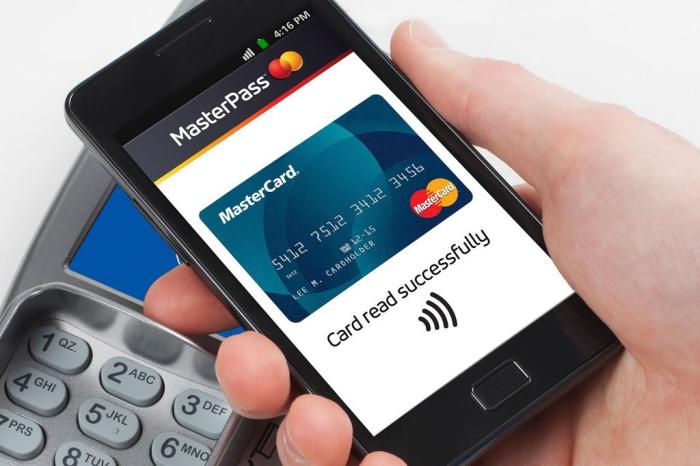Mastercard’s Location-Based Fraud Prevention System
Mastercard’s location-based fraud prevention system is a cutting-edge technology that utilizes smartphone location data to identify and prevent fraudulent transactions. By analyzing the location of the cardholder’s device during a transaction, the system can detect discrepancies and flag potentially fraudulent activities. This system plays a crucial role in safeguarding cardholders and merchants from financial losses.
Technical Aspects of the System
The system relies on a sophisticated combination of data collection, processing, and analysis methods to achieve its objective. Mastercard collects location data from smartphones with the cardholder’s consent. This data is then processed using advanced algorithms and machine learning techniques to identify patterns and anomalies. The system compares the location of the transaction with the cardholder’s typical spending patterns and location history. If there is a significant deviation, the transaction is flagged for further investigation.
Rationale for Using Location Data
The use of location data for fraud prevention is based on the principle that fraudulent transactions often occur outside the cardholder’s usual geographical area. By analyzing location data, Mastercard can identify transactions that are statistically unlikely to be legitimate. This approach offers several advantages:
- Enhanced Fraud Detection: Location data provides an additional layer of security by identifying transactions that may be fraudulent, even if other security measures have been bypassed.
- Reduced False Positives: By considering location data, the system can minimize the number of legitimate transactions that are mistakenly flagged as fraudulent.
- Proactive Fraud Prevention: The system can proactively identify potential fraud attempts before they are even completed, protecting both cardholders and merchants.
Limitations of Location-Based Fraud Prevention
While location-based fraud prevention offers significant benefits, it’s important to acknowledge its limitations:
- Privacy Concerns: The collection and use of location data raise privacy concerns, as it can reveal sensitive information about the cardholder’s movements.
- Accuracy Issues: Location data can be inaccurate due to factors such as GPS signal interference or network errors. This can lead to false positives or false negatives.
- Limited Applicability: The system is most effective in detecting fraud related to physical transactions, such as in-store purchases. It may not be as effective in preventing online fraud.
How Location Data Improves Fraud Detection: Mastercard To Use Smartphone Location To Prevent Credit Card Fraud
Location data plays a crucial role in Mastercard’s Location-Based Fraud Prevention System by providing real-time insights into the cardholder’s whereabouts and enabling the detection of inconsistencies between their location and transaction history. This helps identify suspicious activity and safeguard cardholders from fraudulent transactions.
Examples of Location Data Use in Fraud Detection
Location data provides valuable context to identify potential fraudulent activity by analyzing discrepancies between the cardholder’s location and their transaction history. This approach helps flag suspicious transactions and minimize financial losses.
- Out-of-State Purchases: If a cardholder typically uses their card in New York City and suddenly makes a purchase in California, this could raise red flags, especially if the cardholder is not known to travel frequently. This anomaly could indicate a potential instance of stolen card details or unauthorized use.
- Transactions at Unfamiliar Locations: Transactions occurring at locations significantly distant from the cardholder’s known residence or usual places of business could also be considered suspicious. For example, if a cardholder is known to reside in a suburban area and a transaction is recorded at a high-end jewelry store in a major city, this could trigger a fraud alert.
- Multiple Transactions in a Short Timeframe: A series of transactions happening at different locations within a short period, particularly if these locations are far apart, can be an indicator of fraudulent activity. This scenario could suggest that a stolen card is being used at multiple locations simultaneously.
Comparison with Traditional Fraud Detection Methods
Location-based fraud prevention complements traditional methods like CVV verification and address verification by providing an additional layer of security. While CVV verification and address verification focus on cardholder identity and address validation, location data offers a dynamic and contextual approach to fraud detection.
“Location data provides a powerful tool for fraud prevention, offering a real-time understanding of the cardholder’s location and enabling the detection of discrepancies that might otherwise go unnoticed.”
User Privacy and Data Security Concerns
Mastercard’s Location-Based Fraud Prevention System, while aiming to enhance security, raises legitimate concerns regarding user privacy and data security. This section delves into the potential privacy implications associated with the use of location data and explores the security measures implemented to protect user information.
Mastercard’s Approach to Data Privacy, Mastercard to use smartphone location to prevent credit card fraud
Mastercard emphasizes its commitment to protecting user privacy and data security. The company acknowledges the sensitive nature of location data and strives to balance fraud prevention with user privacy.
- Data Minimization: Mastercard utilizes only the necessary location data for fraud detection purposes. They do not collect or store unnecessary information, adhering to the principle of data minimization.
- Data Encryption: All location data collected and processed by Mastercard is encrypted using industry-standard encryption protocols, ensuring its confidentiality and preventing unauthorized access.
- Data Retention Policy: Mastercard follows a strict data retention policy, deleting location data after a specific period unless required for legal or regulatory purposes.
- Transparency and Control: Mastercard provides users with transparency regarding its location data practices, enabling them to understand how their data is used. Users have the option to opt out of location tracking or limit the data shared with Mastercard.
The Future of Location-Based Fraud Prevention
Location-based fraud prevention is a rapidly evolving field, with advancements in technology constantly pushing the boundaries of what’s possible. As location data becomes more accurate and sophisticated, it promises to revolutionize the way we combat financial crime.
Advancements in Location Technology
The future of location-based fraud prevention hinges on the continued development and refinement of location technology. This includes:
- Enhanced Accuracy and Precision: Location data is becoming increasingly precise, allowing for more granular analysis of user behavior and the identification of potential fraud. For instance, advanced GPS technology can pinpoint a user’s location within a few meters, making it more difficult for fraudsters to spoof their location.
- Real-Time Location Tracking: Real-time location tracking enables financial institutions to monitor user activity in real-time, identifying anomalies and suspicious patterns as they occur. This allows for immediate intervention and the prevention of fraudulent transactions before they are completed.
- Integration with Other Data Sources: Location data can be combined with other data sources, such as transaction history, spending patterns, and device information, to create a comprehensive picture of user behavior. This multi-layered approach allows for more sophisticated fraud detection algorithms.
- Artificial Intelligence and Machine Learning: AI and machine learning algorithms can analyze vast amounts of location data to identify subtle patterns and anomalies that might not be apparent to human analysts. These algorithms can learn from past fraud attempts and adapt to evolving fraud techniques.
Personalized Fraud Prevention Strategies
Location data can be used to personalize fraud prevention strategies for individual users, making them more effective and less intrusive. This can be achieved by:
- Risk-Based Authentication: By analyzing a user’s location history and current location, financial institutions can assess the risk of a transaction and tailor authentication requirements accordingly. For example, a user making a purchase at a familiar location might be granted a simpler authentication process, while a transaction at an unfamiliar location might require additional verification steps.
- Contextualized Alerts: Location data can be used to provide users with contextualized alerts about potential fraud risks. For instance, a user might receive a notification if they attempt to make a large purchase at a location that is significantly different from their typical spending patterns.
- Location-Based Spending Limits: Financial institutions can set location-based spending limits for users, preventing unauthorized transactions in specific areas. For example, a user might have a higher spending limit at their home address but a lower limit when traveling abroad.
Challenges and Ethical Considerations
While the future of location-based fraud prevention holds immense promise, it also presents a number of challenges and ethical considerations:
- Privacy Concerns: The use of location data raises significant privacy concerns. It is crucial to ensure that user data is collected and used responsibly and ethically, with appropriate safeguards in place to protect user privacy.
- Data Security: Location data is highly sensitive and must be protected from unauthorized access and misuse. Financial institutions must implement robust security measures to safeguard this data.
- False Positives: Location-based fraud detection systems can sometimes generate false positives, leading to legitimate transactions being blocked. It is important to strike a balance between security and user experience, minimizing false positives and ensuring that legitimate transactions are not unnecessarily disrupted.
- Bias and Discrimination: Location data can be used to create discriminatory outcomes, particularly if it is used to profile users based on their location or demographic characteristics. It is important to ensure that location-based fraud prevention systems are designed and implemented in a way that is fair and equitable.
Mastercard to use smartphone location to prevent credit card fraud – Mastercard’s location-based fraud prevention system is a double-edged sword. On one hand, it has the potential to significantly reduce credit card fraud. On the other hand, it raises concerns about privacy and data security. As technology continues to evolve, we can expect to see more sophisticated and intrusive fraud prevention systems. It’s up to us to decide whether the benefits outweigh the risks.
Mastercard’s new fraud prevention system uses your smartphone’s location data to verify transactions, ensuring your credit card is only used where you are. It’s like how a used electronics retailer might pay more for a phone with Flappy Bird installed – it’s all about recognizing unique value. With location-based verification, Mastercard aims to make your online shopping experience more secure and less susceptible to fraudulent activity.
 Standi Techno News
Standi Techno News

